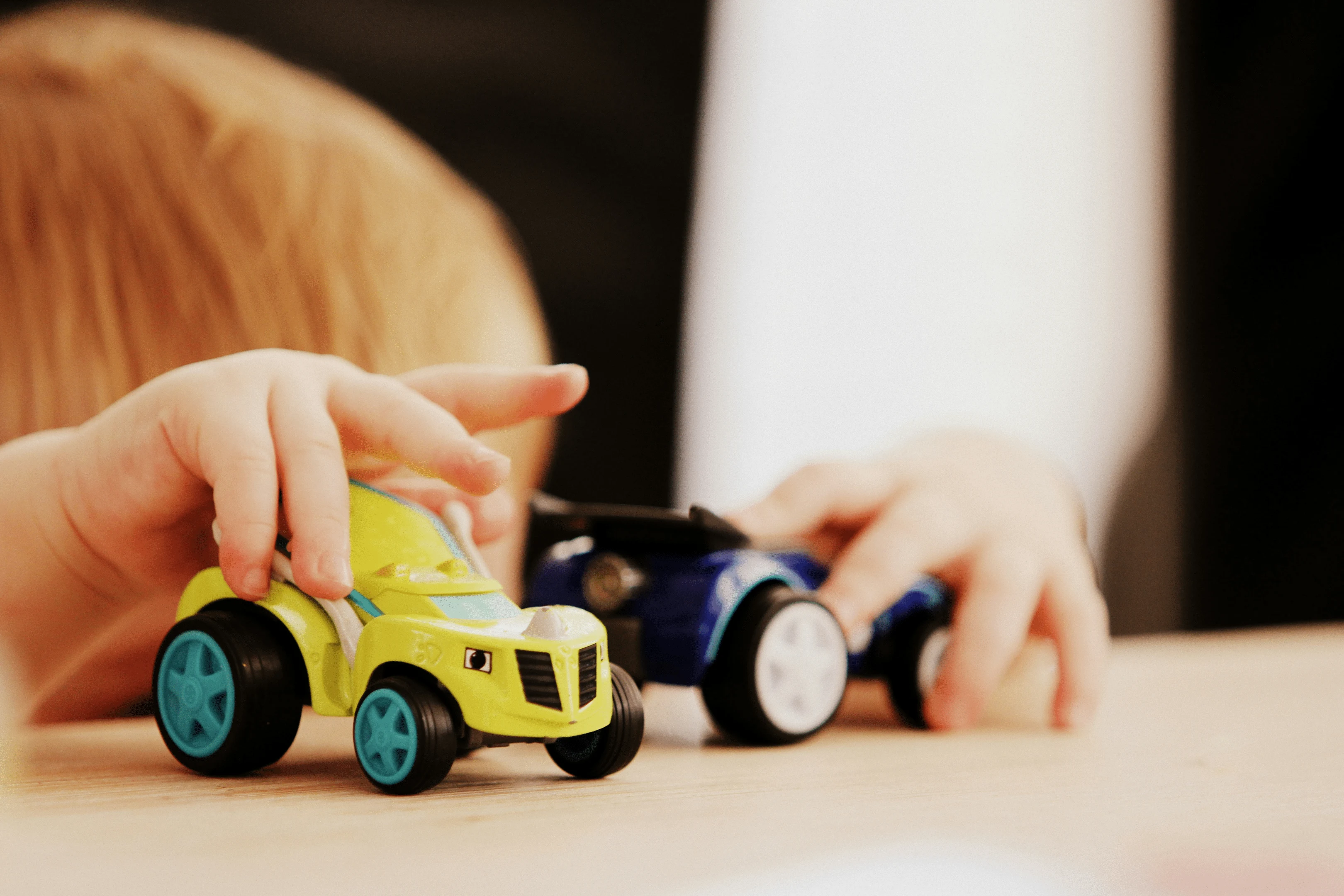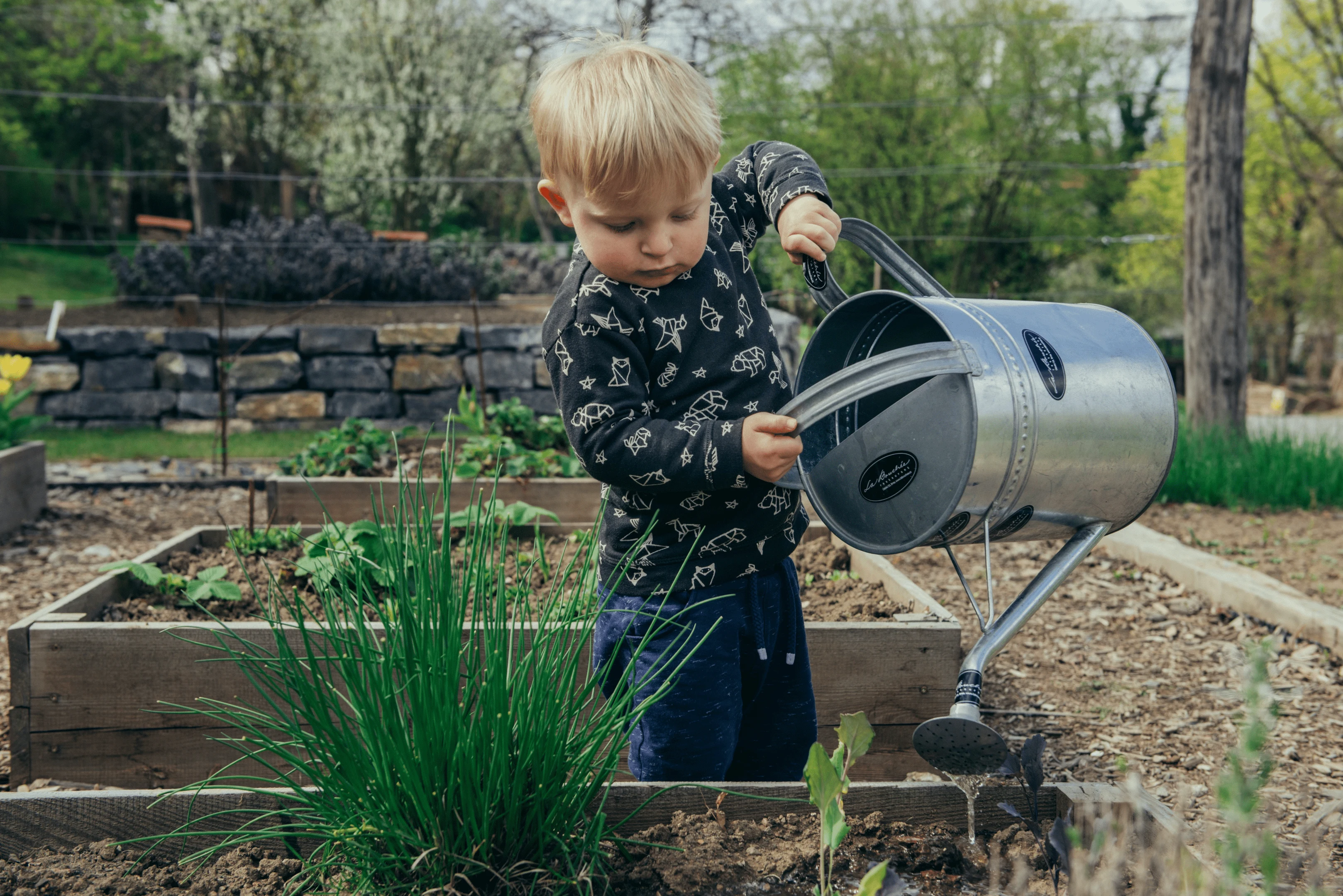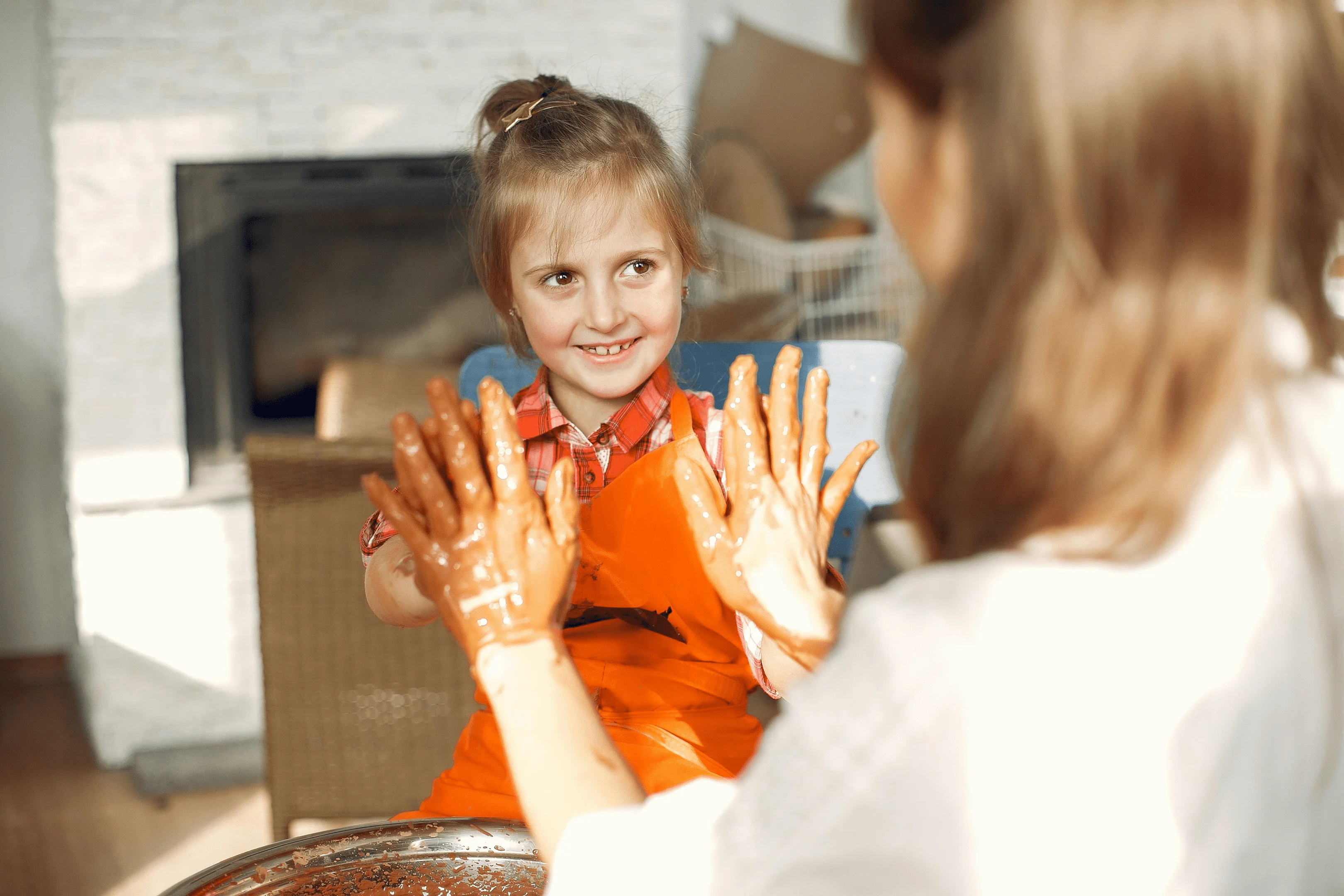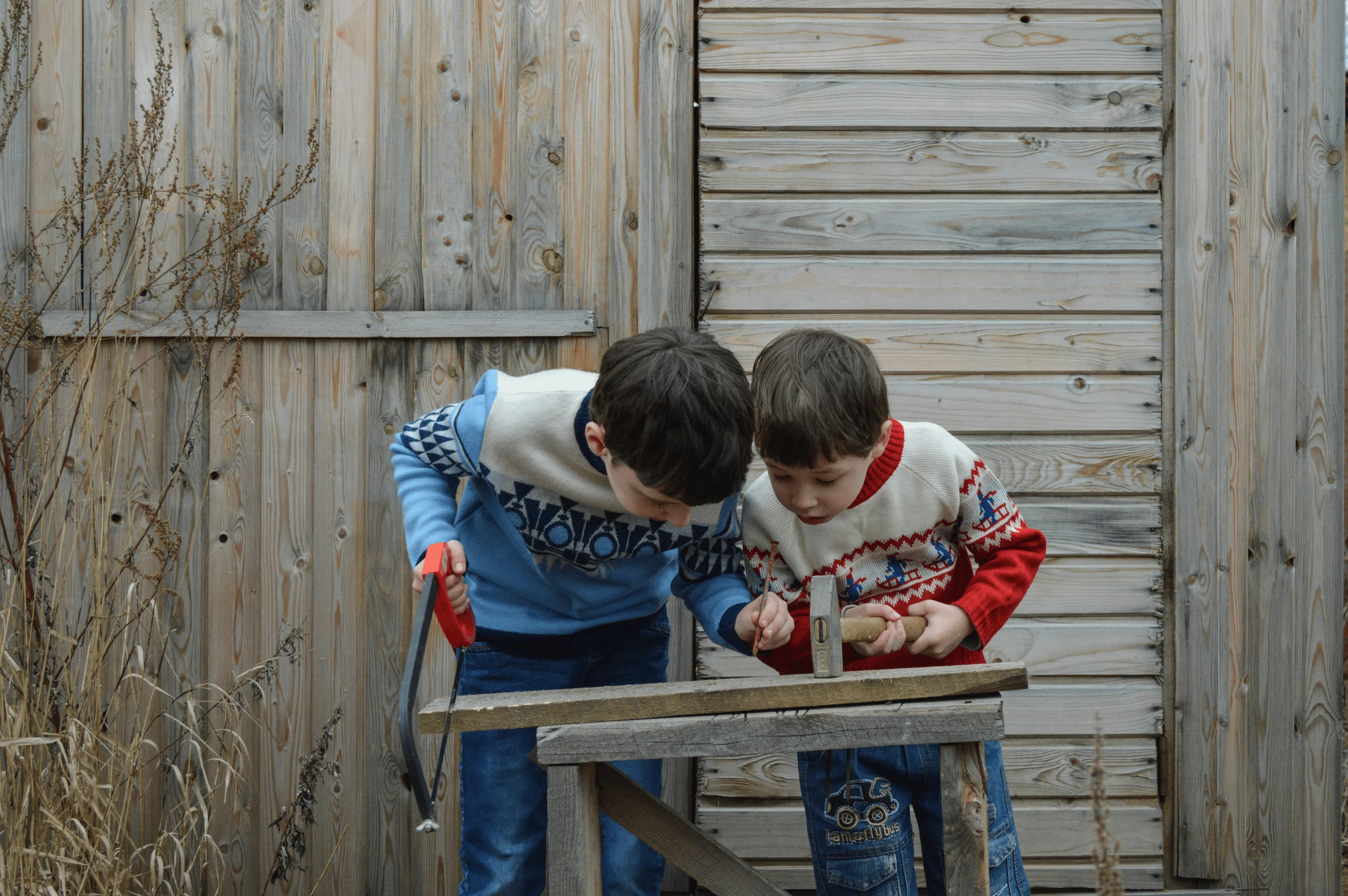
As toddlers grow, they start to develop and refine their physical movements. These movements are usually divided into two categories:
Gross Motor Skills
Gross motor skills are movements involving the larger groups of muscles responsible for movements like independent sitting, crawling walking and running.
Fine Motor Skills
Fine motor skills are movements involving the smaller groups of muscles that are responsible for activities like grasping, writing, squeezing, or manipulating an object.
Both fine and gross motor skills are important. But in this article, we’re going to look at fine motor skills in particular; the smaller, more refined, physical skills that children need to develop to be able to take care of themselves and perform many different daily tasks.
Fine motor skills are needed for movements like turning on a tap, unscrewing a bottle, pegging out washing, holding and manipulating a pencil to write and draw, and using tools like a screwdriver and a hammer—all movements that we sometimes take for granted as adults.
Why Are They So Important?
Without well-developed fine motor control, children risk being clumsy, dropping things, and being uncoordinated and unbalanced. We need our fine motor skills daily and wouldn’t get far without them, so the earlier we develop them, the more independent children can become. The muscles that we need to develop are linked to our larger core muscles. If children are going to have dexterity, strength, coordination and precision, they need to have strength in their core muscles first. So providing children with opportunities to freely move about daily is always a great starting point.
What Resources Will I Need?
There are a lot of expensive catalog resources that you can buy to develop children’s fine motor skills, (things like plastic tweezers to pick up little pom poms). But I think the best way is to provide children with real-life, natural and authentic resources. That way, children think they are being just like the adults. They will have more purpose in their play and will build and develop those essential muscles in no time.
Top 5 Suggestions for Fine Motor Skills Activities with Toddlers
1. Have a Wash Day
This is a lovely, real-life activity, best done outside in the fresh air if you can.
Children love to pretend they are doing some real washing. It gives their play an extra dimension if they are doing something for a real purpose.
What you need:
A baby bath or a water tray full of warm soapy water
A bar of soap
A scrubbing brush
Something to wash like doll’s clothes, aprons, towels or whatever you have
What to do:
Using the scrubbing brush, show the children how to rub the soap into the clothes and scrub them.
When the clothes are nice and soapy, give them a good rinse in some clean, cold water and then show the children how to wring the clothes out. Twist the fabric with both hands going in opposite directions, as hard as you can to wring out as much water as possible.
When the clothes are thoroughly rinsed, give them a good shake out and it’s time to peg them on the washing line. Use pegs that have a spring motion. When everything is on the washing line, let them blow dry in the wind and sun, until it’s time to unpeg them.
Why this works:
Scrubbing the clothes means children will be developing their grip. Holding on to the fabric with one hand and scrubbing with the other involves all the muscles from the shoulder girdle down the arms and into the fingers.
Wringing the clothes out involves twisting and gripping; both good ways to build up the muscles in the wrists and fingers.
Pegging is also a great way to improve fine motor skills. Any kind of pinching and gripping action develops the exact muscles needed for a comfortable pincer grip when it’s time to start writing.
As a bonus, you can talk to the children about how it’s better for the environment to let clothes dry naturally outdoors than to use an electric tumble dryer.
2. Making Dinner

I honestly think there is no better way to develop children’s all-round skills than through cooking activities. There are so many opportunities to develop fine motor skills and once again it’s for a real-life, authentic purpose so the children are much more likely to be motivated. They can be just like mom or dad.
What you need:
Chopping boards
Knives
Spoons
Cheese grater
Garlic press
Potato masher
Rolling pins
Pastry cutters
Skewers
Tongs
Various food
(You don’t have to do all these fine motor activities on the same day – you can build up over time).
What to do:
Let the children scoop butter or margarine with a spoon, and add it to a bowl of flour to make pastry.
Show them how to rub the mixture lightly between their fingers until it forms breadcrumbs.
Roll out the pasty with the rolling pins and cut out shapes using the pastry cutters.
Chop and slice fruit, vegetables and cheese on a chopping board with a knife. (Obviously, this needs to be under close adult supervision, but even toddlers can start to use utensils if we trust them and show them how).
Thread the chunks of fruit, vegetables and cheese onto skewers to make kebabs or use the tongs to count out pieces of food onto each plate.
Under supervision, allow the children to grate cheese and carrots, and then put the grated mixture onto wraps and roll them up.
Why this works:
Making and rolling out pastry with a real wooden rolling pin is very therapeutic as it involves pushing pulling and applying pressure. It’s a great way of building core strength and developing the arm muscles, especially if you keep it in the fridge for a few hours beforehand.
Rolling pinching pushing and pulling pastry dough all help to develop fine motor skills, as does making breadcrumbs by sifting the mixture through your fingers.
Chopping fruit also requires children to apply pressure and they will be developing coordination and balance skills at the same time. Picking up pieces of food with food tongs is quite tricky for little hands, so allow plenty of time to practice and keep it playful. It’s another lovely way to develop a child’s pincer grip.
Using a grater to grate pieces of cheese or carrot is also brilliant for developing balance and coordination, as you have to hold onto the grater with one hand and grate with the other. Most children will need a little help to do this at first and some encouragement to use their big muscles!
Other fine motor control ideas in the kitchen are using a garlic press to push down and apply pressure – a great squeezing and pushing action.
Using a masher to mash up cooked potatoes or boiled eggs also involves a great deal of force and pressure and is loads of fun.
3. Gardening

Being outside in fresh air is always a bonus, but did you know there are plenty of ways for children to develop their fine motor skills as they do the garden?
What you need:
A digging area
Child-sized spades, forks trowels and sieves
Packets of seeds (grass or cress are best)
A water source, watering cans, spray guns
What to do:
Let the children dig over a patch of earth using tools like spades, forks, trowles and sieves. Incidentally, this is a great way of developing gross motor skills and building a strong core.
When the soil has been worked over, encourage the children to poke holes in the earth with their index fingers, and then carefully sprinkle seeds into the holes, bringing their fingertips together so that the seeds don’t all drop too quickly.
Once the seeds are in the ground, what better way to have fun than to use a water spray gun to give them all an individual water. Alternatively, fill up a watering can and tip it carefully onto the seeds.
Why this works:
Pushing into the earth with your index finger is a way of developing precision and balance. Sprinkling the seeds requires coordination and precision, too. Otherwise, all the seeds will end up in the same place and they won’t grow. Once children know this, they are much more careful about this job. Pulling the trigger on a water spray is a brilliant way to refine the muscles in the fingers and wrists and carrying a water can builds up all the muscles in the shoulders.
As a bonus, if you plant grass seeds, they grow very quickly and the children can snip the grass with their fingers (another great way to develop fine motor skills).
Gardening is simply a fun fine motor activity for kids!
4. Clay

Real clay isn’t used as much as it used to be in childcare and education settings, but if you ask me, there is nothing better! Clay has a unique texture. I’m not talking about ready-mixed clay, but real red or brown clay that you need to wet and sculpt, just like a real potter.
What you need:
Red or brown clay, stored in a plastic bag
Plenty of water
Wooden boards
Aprons or waterproofs
What to do:
Clay can be very messy so make sure the children are well covered.
Give each child a board and a good-sized lump of clay.
Show them how to use the water to keep it damp (alternatively, you could use spray guns again here).
Let the children explore the properties of the clay. There is no need to expect a finished product. Just playing with the clay will bring about lots of opportunities for fine motor development. And the great thing is, you can collect it all up and reuse it if you store it in a plastic container.
Why this works:
Clay can be pushed, pulled, rolled, pinched, squeezed and squelched. All brilliant ways of developing the shoulder girdle muscles, the back muscles, and the arm and hands. As a bonus, it also helps children develop their sensory perception.
5. Real Tools

I’m a big believer in letting children use real tools as early as possible, rather than toy plastic versions. As long as the children can follow instructions, and there is close adult supervision, I’ve seen children as young as two years old using real tools with purpose, just like Daddy and Mummy. You know your children best, so assess the risks and benefits of this activity before you start.
What you need:
Pieces of lightweight wood like balsa wood
Lightweight hammer
Nails or tacks
Screwdrivers
Screws
A workbench / workspace
Safety goggles
What to do:
Providing a lightweight hammer and some nails or tack to knock into wood will attract children to you like a magnet. You can use offcuts and planks of wood, or how about using a giant pumpkin to practice knocking nails into? Learning not to hammer your fingers is the best way to learn balance, coordination and precision skills fast! Experimenting with a screwdriver and screws is also a great way of learning those difficult twisting movements for a real-life purpose. I used to give children an old wooden box with hinges, let them take the screws out, and then put it back together again.
Why this works:
Children love to think they are doing the same things that adults do. Carefully holding a nail, before you knock it in, requires both left and right hand to be coordinated. Hitting the nail on the head is tricky, even for some adults, so allow plenty of time to practice and have another try. I remember my youngest daughter using a hammer and nails to “help” her dad build our conservatory when she was still in a nappy. If we give children opportunities, they will always rise to the challenge.
If you like this idea and would like more information on using real tools with young children, visit this blog for inspiration.
If you like these and would like more ideas for fine motor skill development, check out this link.
Have fun.
